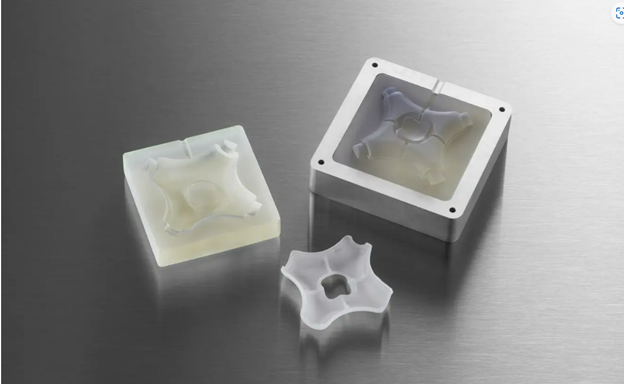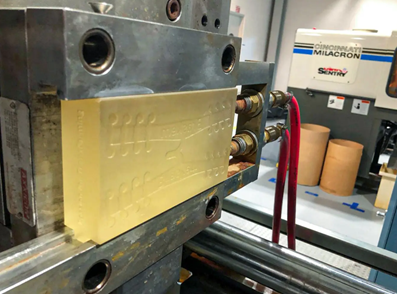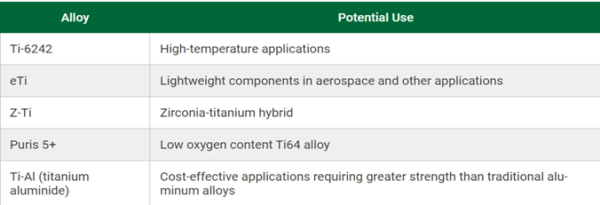The Impact of 3D Printing on Mold Making

Additive Manufacturing (AM) emerges as a transformative technology with the potential to redefine design paradigms and manufacturing processes across various industries, especially when using metal materials.
Cost-Effectiveness and Sustainability
3D printing significantly enhances the industry by improving cost-effectiveness, reducing waste, and providing unparalleled design flexibility. This allows the production of functional prototypes and small parts. In the plastics industry, this method is particularly advantageous for creating 3D-printed injection molds in-house for low-volume production (10-1000 parts), as it saves time and money compared to expensive metal molds. Traditional mold-making methods rely on costly materials like aluminum or steel and involve labor-intensive processes, leading to higher overall costs.
You can also read: Reduce Thermoforming Mold Production Time & Costs With 3D Printing
Applications of 3D Manufacturing in Mold Design

An injection mold 3D printed with a High Temp Resin Courtesy of Formlabs.
Design flexibility is a significant advantage of 3D printing, allowing for complex geometries that are difficult to achieve with traditional methods. However, designers must be mindful of size constraints, potentially printing larger molds in sections. 3D printing facilitates rapid iteration and prototyping, enabling quick design modifications. Additionally, incorporating efficient cooling or heating channels and using structural reinforcement techniques, such as infill patterns and increased wall thickness, enhances mold durability and performance during injection molding.
Designing 3D-printed molds for injection molding requires careful consideration of factors to ensure optimal performance and part quality. Fundamental guidelines include selecting the appropriate material, such as PETG, ABS, Nylon, or high-temp resins, based on the application’s stress and thermal resistance requirements. Incorporating draft angles of 1 to 2 degrees facilitates easy ejection of molded parts while maintaining consistent wall thickness (0.04 to 0.14 inches) and helps prevent defects like warping or sinking. Achieving a smooth surface finish may necessitate post-processing steps like polishing or applying protective coatings.
Manufacturing Revolution
Metal 3D printing has emerged as a transformative technology in various industries, including aerospace, automotive, and biomedical sectors. The additive manufacturing process for metals starts with material mining and then progresses through stages such as primary metal production, feedstock preparation, 3D printing, post-processing, and recycling. Consequently, understanding and optimizing energy usage throughout this cycle is crucial for enhancing sustainability and efficiency.
Moreover, metal production is energy-intensive, with mining and processing consuming a significant portion of global energy. Therefore, innovations in energy-efficient processes and sustainable practices are essential to mitigate the environmental impact of metal 3D printing.
Metal Powders and Innovations in Material Supply
Ancient civilizations like the Egyptians and Incas crafted objects using pressed metal powders. This technique parallels modern powder forging. It evolved from the necessity to produce iron-based products before iron melting capabilities emerged.

Available Titanium Alloys for AM. Courtesy of Additive Manufacturing of Metals: Fundamentals and Testing of 3D and 4D Printing, 1st Edition.
Today, PM technologies, including metal injection molding (MIM), play crucial roles in various industries, generating $15 billion annually from ferrous parts.
As the additive manufacturing (AM) market expands, advancements in powder production techniques are increasingly essential. These advancements must meet AM process demands.
Particularly, titanium and its alloys hold significant importance across aerospace, automotive, and biomedical sectors. Therefore, powder production advancements are crucial.
Currently, research focuses on printed titanium applications for smaller engine components, such as brackets and housings, driving market growth.
By 2023, the titanium powders market for AM reached $1.4 billion, highlighting the rapid growth and expanding adoption of AM technologies.
Moreover, these advancements in powder production will drive innovation and efficiency across key industries. Continued R&D investment ensures technological progress.
Ultimately, this investment will keep additive manufacturing at the forefront, thereby paving the way for sustainable and advanced manufacturing solutions.
